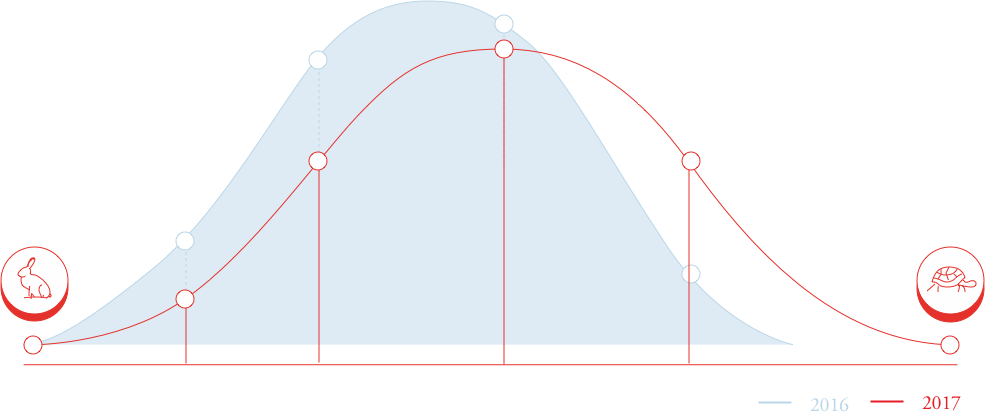

Want to join the conversation? Find out more about how you can participate in the 2019-20 Global CIO Survey.
A story of limited progress

On a scale from 1 to 5, where 1 is ‘entirely enabled’ and 5 is ‘not enabled at all’, rate the extent to which you feel your organisation is ‘digitally enabled’?

of CIOs see their organisations as 'digital innovators'

see their organisations as early adopters

characterise themselves as part of an early majority
CIOs point to complexity, cost, culture, skills and security as the main barriers to digital transformation.
CIOs point to complexity, cost, culture, skills and security as the main barriers to digital transformation.

of CIOs believe complex legacy technology is the main barrier to digital transformation
In an ever-evolving threat landscape, security concerns have a disproportionate impact on IT innovation.

A third of CIOs admit that security issues had seen IT projects cancelled or halted.

Ransomware and corporate extortion will be the biggest threat over the next 12 months.
Security concerns, amplified by local data regulations, are also hampering efforts to streamline IT through cloud services adoption

Respondents citing local data regulations as a barrier to using cloud services
What are the biggest challenges facing organisations, related to the increased use of using cloud services?
All this means CIOs are still spending too much time focused on keeping the lights on. There is precious little time for strategy.

of CIOs outsource most of their IT (more than 50% outsourced), but the bulk of IT remains in-house

in 2013, most CIOs wanted to focus 70% of their time on strategic initiatives

majority of CIOs spend 60-80% of their time on day to day IT management
If CIOs are to deliver digital transformation they must be change makers, not change managers - and they have big plans to be just that.

of CIOs plan to replace and/or adapt existing infrastructure and attempt culture change

just 33% expect to increase digital transformation budgets.

only 4% of CIOs plan to do nothing
Progress towards full digital enablement may be slow, but CIOs are delivering new, digital services and capabilities
What function do organisations target when developing their apps?

Internal applications for streamlining existing business processes

Building new service revenues through new applications

Moving an existing product or service to an application experience

Marketing activity to promote a product or service

The IoT is already a reality for a quarter of CIOs (24%), up from 19% in 2016.
However, the lack of overarching strategy means they are worthy, but piecemeal developments.

In 2015, 63% of CIOs ranked analytics as very important or critical in driving business innovation
CIOs cite familiar barriers to analytics delivery in 2017
What are CIOs doing to address these barriers?

are working with line of business colleagues to understand their needs

are addressing data challenges

are setting up working groups to unravel complexity
Digital technologies are changing everything - change that will only accelerate. Right now, Uber is built on a digitally-enabled business model, but before we know it, autonomous vehicles will change the very nature of travel.
As digital pioneers CIOs will be change makers, not change managers and, as this year’s CIO Survey demonstrates, the race to take on that role is underway. CIOs are adapting to the ubiquity of shadow IT, addressing the barriers created by legacy IT and seeking to take control of change.
But they are also realistic. They understand the scale of the digital transformation challenge and they are prepared to look outside for help - to trusted partners able to both take on the heavy lifting of day to day IT and to simplify technology in creating environments in which digital enablement can flourish.
At Logicalis, we see ourselves as ‘architects of change’ delivering real-world solutions, services and analytics – we stand ready to support CIOs to turn their digital ambitions into reality.
Indeed, we are already working with a range of organisations to deliver the services they need to derive new revenue and realise process efficiencies – securely.
Our work supporting digital transformation is diverse, but it is shaped by a single minded vision: Technology must be an asset for businesses, not a problem. It must help to make our complex, fast-changing world a simpler, more inspiring place to live, work and grow.





